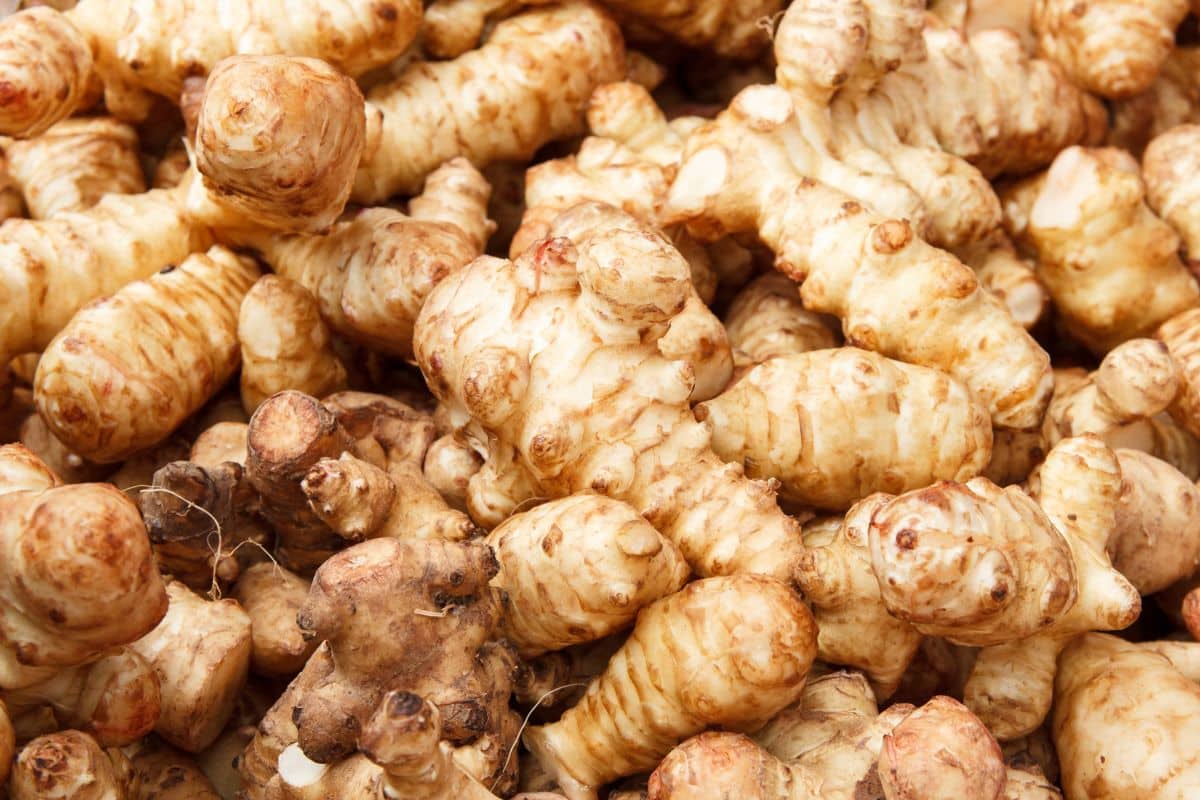Sunchokes: The Deliciously Deceptive Root.
Don’t be fooled by the sunchoke, nothing is what it seems. With more names than the devil, sunchokes (also known as Jerusalem artichokes or sunroots) can be intimidating to those unfamiliar with this scraggly root vegetable.
It looks like ginger, cooks like a potato, and tastes like an artichoke. Here’s your one-stop guide to the root that’s as versatile as it is misunderstood.
What Do You Call It?
This shifty root goes by many names. Commonly called the Jerusalem artichoke, it’s neither from the Middle East nor related to actual artichokes.
The sunchoke is an edible tuber—the underground root of a prolific North American sunflower, Helianthus tuberosus. At some point, the Italian word for sunflower, girasole, became distorted into “Jerusalem.”
Though botanically unrelated to artichokes, its slightly nutty, artichoke-like flavor likely led to the shared name. You may also hear it called sunroot or earth apple. At Boston Organics, we stick with “sunchoke”—a name coined in the 1960s by produce marketers hoping to popularize this obscure veggie.
How Does It Grow?
Watch out—sunchokes are tenacious. Once established, they’re hard to remove from a field. They tolerate hot summers and sub-zero winters. The frost kills the foliage, but the tubers survive underground for months.
Sunchokes are challenging to harvest commercially. Conventional potato-harvesting equipment doesn’t work well, and hand-digging—though most effective—is time-consuming and costly. Historically, livestock would dig up and feed on the tubers, and farmers used sunchokes to fatten cattle, sheep, and hogs.
We source most of our sunchokes from the Deep Root Organic Coop, a collective of nearly 20 farms in northern Vermont and southern Quebec.
How Do You Store (and Digest) It?
True to their nature, sunchokes store best underground. Once harvested, they lose moisture quickly due to their thin skin.
- Store sunchokes in a cool, dry, well-ventilated place for a few weeks.
- For refrigeration, wrap them in a paper towel and place inside a sealed plastic bag in the crisper drawer.
Nutrition-wise, sunchokes are low in fat and high in carbohydrates, with about 3 grams of protein per cup. They’re an excellent source of thiamin and iron and a good source of phosphorus and potassium.
Unlike potatoes, which store starch as glucose, sunchokes store energy as inulin—a carbohydrate broken down into fructose. This makes them a smart substitute for diabetics or anyone watching their blood sugar.
How Can You Cook It?
Sunchokes are incredibly versatile—and once you start cooking with them, they’ll become a kitchen favorite. They can be:
- Steamed
- Boiled
- Grilled
- Fried
- Pickled
- Microwaved
- Even eaten raw!
Renowned chef Odessa Piper recommends mincing raw sunchokes and adding them to vinaigrettes like you would with garlic. She also uses them to thicken broths with a light, earthy flavor.
Before cooking, scrub them thoroughly to clean out all the nooks and crannies. Peeling is optional—it’s tough work and often unnecessary.
Looking for ideas? Try roasted sunchokes with herbs, sunchoke soup, or a raw sunchoke slaw.

